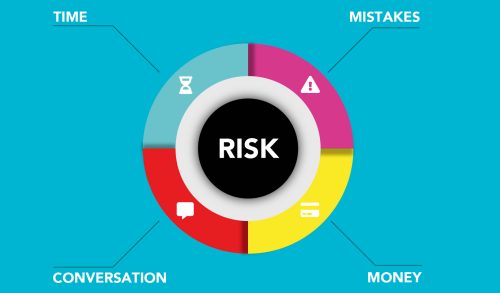Understanding the Purpose and Benefits of Risk Management
The purpose of risk management is to identify, assess, and prioritize potential risks to a business and implement strategies to minimize their impact. By proactively identifying and addressing risks, businesses can avoid costly disruptions, protect their reputation, and maintain their competitive advantage. The benefits of an effective risk management plan include improved decision making, increased confidence in the business’s future, better allocation of resources, improved communication and collaboration among stakeholders, and increased resilience in the face of unexpected events. Additionally, a well-executed risk management plan can help businesses stay ahead of potential problems, enabling them to respond quickly and effectively to unexpected events. By taking a proactive approach to risk management, businesses can protect their interests, maintain stability, and achieve their goals.
Identifying Potential Risks to Your Business
Identifying potential risks to your business is the first step in developing an effective risk management plan. This process involves conducting a thorough analysis of your business operations, including financial, operational, and legal risks, as well as industry-specific risks. It’s important to consider internal and external factors, such as market changes, technological advancements, and natural disasters. You should also seek input from employees, customers, and other stakeholders to identify any potential risks that may be overlooked. In order to identify all potential risks, it may be helpful to use tools such as SWOT analysis, risk matrices, and scenario planning. By identifying potential risks, you can develop a comprehensive plan to minimize their impact and protect your business.
Assessing the Severity and Probability of Each Risk
Assessing the severity and probability of each risk is critical to developing an effective risk management plan. This step involves evaluating the potential consequences of each risk and the likelihood of it occurring. The severity of a risk can be determined by evaluating the potential impact on the business, including financial losses, damage to reputation, and operational disruptions. The probability of a risk can be determined by considering factors such as past experience, industry trends, and current events. It’s important to prioritize risks based on both the severity and probability of their occurrence. Risks that are both severe and probable should receive the highest priority and require immediate action. By accurately assessing the severity and probability of each risk, businesses can allocate resources effectively and prioritize their risk management efforts for maximum impact.
Developing Strategies for Mitigating Risks

Photo by on Pexels
Once the potential risks to your business have been identified and assessed, the next step is to develop strategies for mitigating them. This process involves identifying potential solutions and selecting the most effective ones based on your risk assessment. Some common strategies for mitigating risks include avoiding the risk altogether, transferring the risk to another party through insurance or contractual agreements, reducing the severity of the risk, and accepting the risk. It is important to consider the cost, feasibility, and overall impact of each strategy. In some cases, multiple strategies may be used in conjunction to provide a comprehensive solution. Additionally, it is important to regularly review and update your risk management plan as the business environment evolves and new risks emerge. By developing effective strategies for mitigating risks, businesses can protect their interests, maintain stability, and achieve their goals.
Monitoring and Evaluating the Effectiveness of Your Risk Management Plan
Monitoring and evaluating the effectiveness of your risk management plan is crucial for ensuring its continued success. This process involves regularly reviewing the plan to assess its ability to effectively mitigate risks, and making any necessary changes. Key metrics to track include the frequency and severity of risks, the cost of risk mitigation efforts, and the effectiveness of your risk mitigation strategies. It is also important to seek feedback from employees, customers, and other stakeholders, to identify any areas for improvement. Regular audits and assessments can also provide valuable insight into the effectiveness of your risk management plan. By continuously monitoring and evaluating your plan, you can ensure that it remains relevant and effective in mitigating risks, and that your business is protected against potential threats.
Communicating Your Risk Management Plan to Stakeholders
Effective communication is essential to the success of any risk management plan. By communicating your plan to stakeholders, you can ensure that everyone is aware of potential risks and the strategies in place to mitigate them. This helps to create a shared understanding of the risks and to foster a culture of risk awareness within the organization.
When communicating your risk management plan, it is important to consider the needs and perspectives of different stakeholders, including employees, customers, shareholders, and regulators. This may involve tailoring your message to meet the needs of specific groups and using a variety of communication channels, such as presentations, training sessions, and written documents. Clear and concise communication can help to build trust and confidence among stakeholders, and ensure that everyone is prepared to respond to risks in a coordinated and effective manner. You can make a slide deck to present your risk management to stakeholders and teammates.
Conclusion
An effective risk management plan is crucial for the success and stability of any business. The process of developing a risk management plan involves identifying potential risks, assessing their severity and probability, developing strategies for mitigating those risks, monitoring and evaluating the effectiveness of the plan, and communicating the plan to stakeholders. By following these steps, businesses can protect themselves against potential threats and achieve their goals. Regular review and revision of the plan is also important to ensure its continued effectiveness. By prioritizing risk management and taking a proactive approach to risk mitigation, businesses can create a stable and secure environment that supports their success and growth.




